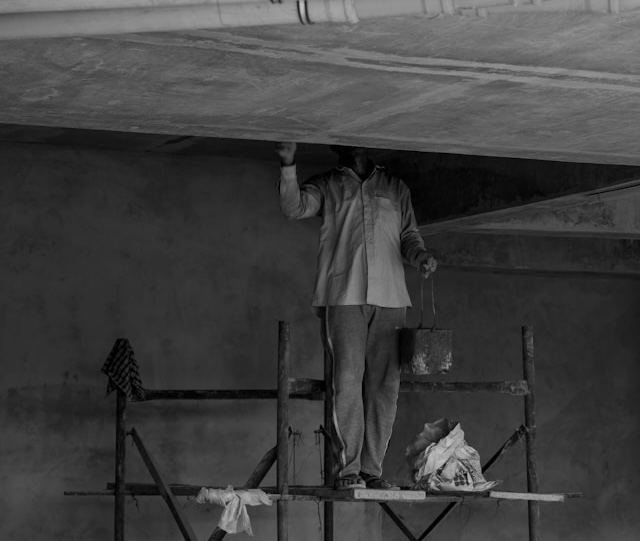Navigating Home Restoration: Steps to Recover From Water and Fire Damage
June 9, 2025When facing the aftermath of water or fire damage, a structured restoration plan is critical. Start by assessing the full extent of the damage and documenting it thoroughly. Then, remove all compromised materials and begin the drying and cleaning process. Next, inspect and restore key systems like HVAC, electrical, and plumbing. Finally, focus on rebuilding and applying finishing touches to bring your home back to a safe, livable condition. Each of these steps plays an essential role in returning your home to pre-loss condition.

Assessing the Damage
Thorough damage assessment is the first and most critical step in any home restoration process. Begin by documenting everything with detailed photos and videos. Create an inventory of damaged items, including furniture, fixtures, and structural components. This documentation will be essential for insurance claims and for coordinating restoration efforts.
Next, inspect structural elements—walls, ceilings, floors—for signs of weakening or collapse. Check for hidden damage caused by smoke and soot, and don’t overlook areas affected by water from firefighting efforts. Moisture left untreated can quickly turn into mold and mildew, compounding the damage.
Also assess mechanical systems:
- Electrical wiring may be damaged by heat or water.
- Plumbing systems could be compromised due to pipe bursts or corrosion.
- HVAC systems might need complete cleaning or replacement if exposed to excessive heat or water.
Engaging professionals to evaluate these systems ensures safety before moving forward.
Removing Damaged Materials
Once assessments are complete, the next step is removal of damaged items and materials. This includes:
- Drywall
- Flooring (carpet, tile, laminate)
- Cabinetry
- Trim and insulation
Begin by containing the damaged area to prevent the spread of moisture or contaminants. Carefully remove all furniture and personal items and relocate them to a safe, dry location.
Use protective gear when dealing with soot, mold, or water-contaminated materials. Clear debris promptly and dispose of it according to local regulations. Thorough cleaning prepares the space for drying and rebuilding. At this stage, temporary measures like sealing windows or covering roof openings can also prevent further environmental exposure.
Drying and Cleaning
After clearing out debris, focus on eliminating residual moisture. Drying and cleaning are essential for mold prevention and creating a healthy indoor environment.
Best Practices for Drying:
- Open windows to promote air circulation.
- Use industrial fans and dehumidifiers.
- Check hidden spaces (behind walls, under flooring) for trapped moisture.
- Monitor humidity and temperature regularly.
Dehumidifiers and air movers are critical for speeding up evaporation. Once dry, clean and disinfect all affected surfaces. This includes:
- Hard flooring and walls
- Cabinet interiors
- Vents and baseboards
Failing to thoroughly dry and clean can lead to lingering odors, compromised materials, or mold growth. This is a pivotal step toward a full recovery.
Restoring Mechanical Systems
With the environment clean and dry, turn your attention to mechanical system restoration. Electrical components exposed to moisture can be hazardous, and smoke may damage sensitive electronics.
What to Inspect:
- Wiring and outlets: Check for corrosion or melted components.
- HVAC systems: Inspect ducts, filters, and internal components.
- Plumbing: Look for cracked pipes, faulty fittings, or damaged water heaters.
Hire certified technicians to evaluate these systems. Attempting DIY repairs can increase safety risks. Professionals have tools and experience to identify latent issues and repair systems to code.
For instance, restoration experts in Houston often use thermal imaging and moisture meters to ensure complete remediation before electrical systems are reactivated. Investing in professional assessments protects your home from future hazards and ensures your family’s safety.
Rebuilding and Finishing Touches
Once systems are restored, you can begin the process of rebuilding and finishing. This phase involves restoring both structure and aesthetics.
Rebuilding Steps:
- Re-frame damaged walls or ceilings.
- Reconfigure layout if needed to optimize space or improve safety.
- Bring all construction up to current building codes.
Finishing Touches:
- Install drywall, prime, and paint with mold-resistant coatings.
- Add flooring: Choose between hardwood, tile, or carpet based on needs and budget.
- Upgrade insulation: Especially important for energy efficiency and comfort.
- Install trim, fixtures, and hardware for a polished, complete look.
Attention to detail during this stage transforms the space from a construction zone to a functional, beautiful living area.
Conclusion
Recovering from water or fire damage requires a clear, step-by-step approach. Start with a detailed damage assessment and document everything thoroughly. Remove all compromised materials and perform a comprehensive drying and cleaning process. Next, focus on inspecting and repairing electrical, HVAC, and plumbing systems. Finally, rebuild with attention to both function and design. By staying organized and working with experienced professionals, you can restore your home safely, efficiently, and with lasting results.
